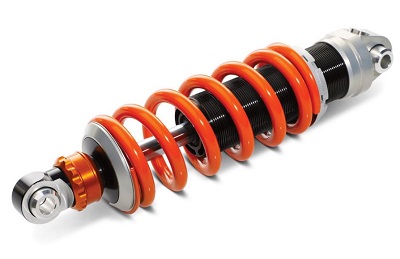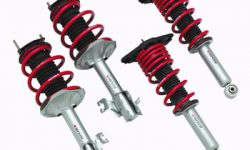When it’s time to replace your struts, you have two options:
1. Take your car to the mechanic, and prepare to pay for costly parts and labor.
2. Buy the struts, do the work yourself and save a boatload of money.
BuyAutoParts.com is a great place for do-it-yourself mechanics to find quality parts at low prices. Our struts are no exception. If it’s time to replace your car’s struts, we carry replacement strut components and complete strut assemblies that meet and exceed OEM strut assemblies. This blog post will explore option #2 above – a recommended plan of action for serious, smart and savvy car owners!
But before jumping in, let’s take a quick look at when you know it’s time for a new set of struts.
Warning: Failure Ahead – When Is It Time to Replace Your Struts?
Strut failure rarely happens all at once; you usually have some miles to figure out what’s wrong. But you have to pay attention! Like most parts and components on your car, an attentive eye (and ear) will help you determine what the problem is. And the earlier you get moving, the better!
Here are some different scenarios that indicate strut failure:
- Downward movement during braking. If you drive a large truck or SUV, this symptom is more severe than other cars. When struts start to go bad on heavier vehicles, braking will produce a nosedive action. Struts help support and stabilize during braking, and when no shock absorption exists, be prepared for unexpected movement.
- Too much bouncing. Cars will bounce over a pothole or speed bump. But excessive bouncing means your struts are shot. Good struts help limit the aftershock of uneven surfaces. Bad struts make it next to impossible to stop bouncing.
- Poor tire wear. Don’t just assume that improperly worn tires are the rotor and brake pads’ fault. (They usually are, but you have to consider all alternatives.) Few things will wear out tires faster than bad struts.
- Fluid leaks. The hydraulic fluid that helps your struts function is essential for optimal internal pressure. If there’s a small hole in your strut assembly and fluid starts leaking, your struts won’t last long.
Those are only four things, but they’re the most common. Once you’re sure you need new struts, it’s time to replace them.
Strut Replacement – Easier and More Affordable Than You Think
Replacing your car’s struts requires terrific amounts of applied torque and pressure, so we recommend that you utilize compressed air tools. If not, you can always borrow a buddy’s or see if your mechanic can perform certain functions to help you do it (mostly) yourself.
1. Safely jack your car up and place on stable jack stands.
2. Remove the wheel(s).
3. Remove the fasteners that hold the strut on the steering knuckle.
4. Use caution to remove bolts; if bolts have trouble removing, gently tap steering knuckle with a hammer to loosen.
5. Remove strut’s upper fasteners (99% of the time, they’re accessible by opening your hood). They’re usually secured with 3-4 bolts.
6. With steering knuckle bolts and upper bolts removed, you can now remove the old strut.
7. Remove old strut spring, only if you have access to a spring compressor.
8. With spring properly and safely compressed, remove the old strut and install new strut onto existing spring. CAUTION: only perform steps 7-8 if you have a properly working spring compressor.
9. With new strut assembled with spring, secure upper bolts of strut assembly (again, usually accessible under your hood in your engine). Gently secure bolts with wrench.
10. Attach lower part of strut assembly onto steering knuckle. NOTE: use minimal pressure on bolts. We recommend you secure bolts with your fingers for now.
11. Tighten upper and lower strut bolts with wrench to ensure proper installation.
12. Put wheel back on.
13. Safely lower car and perform steps 1-12 for any remaining struts.
14. Take your car for a test drive to “break in” your new struts. Your car should turn, brake and control as normal. If you detect any problems, either make the necessary adjustments or have your mechanic inspect the new struts.
This procedure will work for most domestic and import cars. While you can do the work solo, it’s always recommended to have a friend help you out with the work.
Thanks for reading our blog, and we hope this strut primer will help you save parts and labor expense on your next strut assembly replacements. For more helpful info about struts, check out our Buyer’s Guide page. For questions about your next strut replacement or repair project, call our auto parts experts at (888) 907-7225, or visit out contact page for more information, including an instant-answer chat session with a BuyAutoParts.com strut assembly representative.
Written By Juan Cuellar






